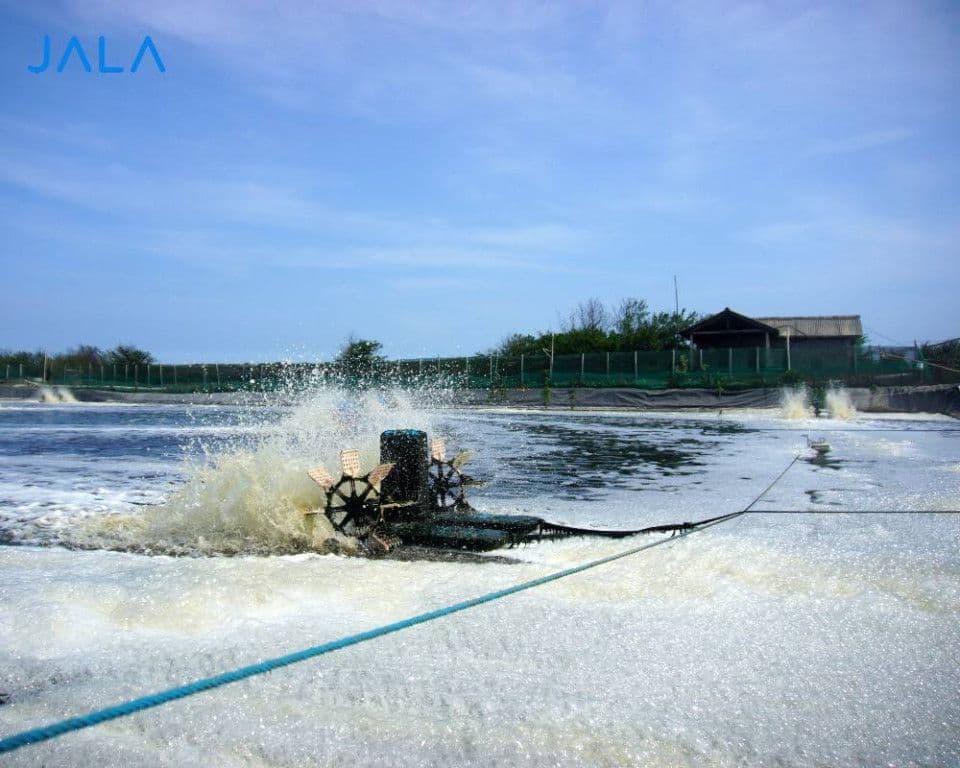
Oxidation-reduction potential (ORP) or redox potential is the measure of tendency or potential in an oxidizing or reducing solution. The measured flow of electrons is a redox reaction. In the process of electron transfer, the detectable current is also known as the redox potential or ORP.
A high positive redox potential shows that high oxidation is occurring. The more negative the redox potential, the higher the reduction. On the other hand, the lower the value (the more negative it is), the greater the deoxidizing or reducing potential.
Redox potential is determined by several factors such as pH and temperature. pH has the biggest effect on redox reactions, followed by temperature, where every 1℃ increase causes an increase in redox.
Why is it important to measure ORP?
Many reactions occur in shrimp farms as part of biological and chemical processes. The chemical reactions in shrimp farms are affected by various mechanisms, and one of the most important ones is redox reactions.
The ORP in shrimp farms can decrease due to reduction during cultivation periods. Redox potential is one of the most essential parameters that can be instantly used as a good indicator of the conditions at the bottom of the pond. When sedimentation rate increases, ORP quickly decreases as sediments have a negative potential.
A change in ORP value can signal farmers to change the water, reset the aerator, apply probiotics, or discover poor water quality. The ORP value also reflects low ammonia levels, the absence of overfeeding, good oxygen demand, and sufficient water circulation, although much water chemistry elaboration is required to confirm this.
In summary, ORP can reflect whether shrimp farm aeration is sufficient or requires adjustment. ORP needs to be measured twice a day, just like pH: in the morning to reflect the condition at night, then in the evening to confirm if the water and feed management is correctly implemented.
What happens if the ORP value drops below normal levels?
The recommended value for ORP in shrimp farms is 200-250 mV. If it reaches-100 mV, the aeration system might not be running well and may cause shrimp mortality.
One of the indications that relate to low ORP is low DO concentrations. A dark sediment surface also indicates low redox due to high levels of Fe2+ ions and nitrates. The production of sulfides (which can be detected through the smell of rotten eggs) is also identified in extremely low ORP values.
Anaerobic activities (reduction) cause high oxygen consumption in the bottom of the pond by microorganisms. This anaerobic condition can cause the diffusion of reduced toxic compounds from the bottom of the sediment to water columns, causing an increase in oxygen demand, decrease in ecosystem quality, and loss in shrimp growth.
To maintain ORP values, farmers should focus on maintaining sufficient DO levels by balancing stocking density and feed ratio with aeration amount. Proper placement of aerators can prevent low redox values. The disposal of mud/pond sediments through the central drain can also be done to overcome low ORP values.
Important notes for ORP parameters in the shrimp farm
- Recommended ORP values are 150-250 mV, a value of -100 mV and below is considered dangerous
- Microorganism activities affect the redox potential of sediments/mud
- ORP should ideally be measured twice a day, in the morning and evening
- Mud sedimentation under aerators/windmills is the best place to measure ORP
- The placement of aerators to ensure oxygenation flow in the water to the bottom of the pond is greatly helpful to deal with anaerobic conditions in water sediment surfaces





